Aird Fragments Connection
1. Introduction
The purpose of this functionality is to be able to connect to airdfragments to work with the whole semantic model but only a subset of representations (diagrams or tables).
It can be useful when working with a big model to shorten connection time and memory consumption.
2. Model Preparation
The model to prepare must be a local model in file format (do an import if necessary). The session must be open.
Two actions can be used:
-
"Fragments…": allows creating classic Capella fragments (see the Capella Model Configuration Management Guide in the Capella User Manual). This action is called on a semantic element and creates 2 files:
-
A .airfragment: containing diagrams,
-
A .melodyfragment: containing semantic elements,
-
-
"Add fragment for Team Connection": allows creating airdfragments to store diagrams.
-
This action is available in the contextual menu of the .aird file:
-
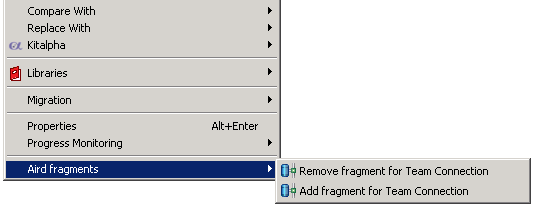
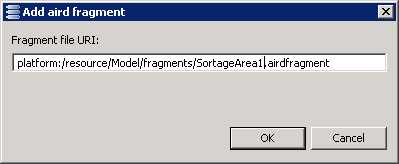
It must be added in the project (in the project root or in a directory of the project, "fragments", for example).
Model organization after an execution of this action:
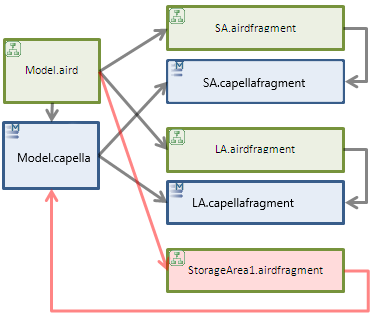
|

|
3. Restrictions
-
The .airdfragment file path must not contain spaces.
-
The project containing the airdfragments must not host many semantic models (only one semantic model is allowed).
4. Connect to Airdfragments
When the model is well organized, export it to the server.
You can create connection projects to several .airdfragments thanks to the dedicated wizard:
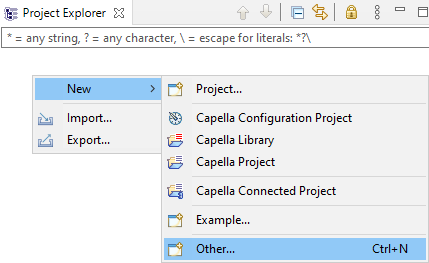
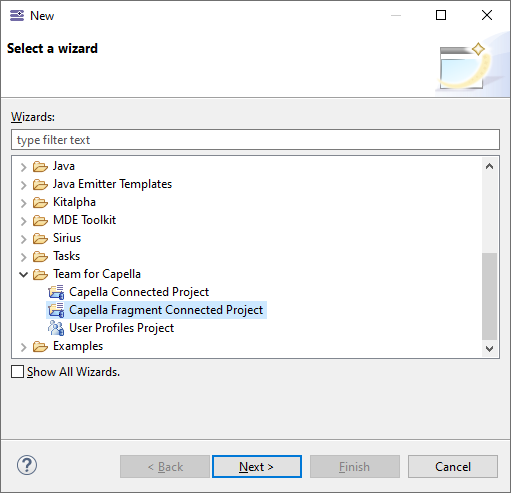
The second page of the connection wizard allows selecting .airfragments to use.
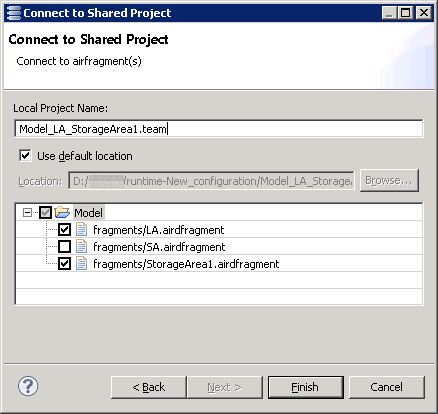
|
Connection to fragments belonging to different models is not allowed since it does not make sense. |
Connections to fragments example:

-
A client using Model_SA.team will see:
-
The whole semantic model,
-
Diagrams contained in SA.airdfragment,
-
-
A client using Model_LA_StorageArea1.team will see:
-
The whole semantic model,
-
Diagrams contained in LA.airdfragment and in StorageArea1.airdfragment.
-
As previously, it is still possible to connect to the .aird, all diagrams will be accessible.
5. Diagrams Moving
It can be needed to move diagrams between aird and airdfragments and between 2 airdfragments.
This can be done on a local model or on a remote model (the source and destination resources must be visible from the same connection project).
To move a diagram to another resource, use the "Move Diagrams" sub menu:

In addition, to ease diagrams management, the "Representations per resource" item can be useful. To display it, uncheck it in the "Customize View…" dialog.
6. Airdfragments Management
airdfragments can only be managed in a local model (do an import if needed).
-
To get rid of classic Capella Fragments, use the "UnFragment…" command (see the Capella Guide/User Manual/Fragment management/Unfragmentation Command section in the Capella User Manual),
-
To get rid of an airdfragment added with the "Remove fragments for Team Connection" command:
-
Move all its contained diagrams to the .aird or another .airdfragment,
-
Use the "Remove fragment for Team Connection" command,
-
Manually delete the .airdfragment from the project.
Do not directly use the Eclipse delete command, all content would be lost.